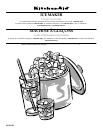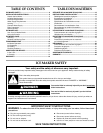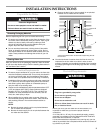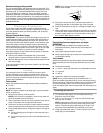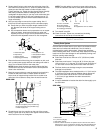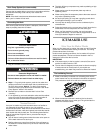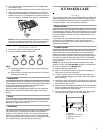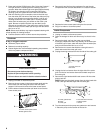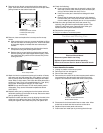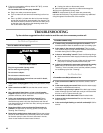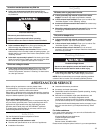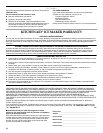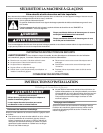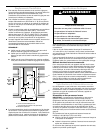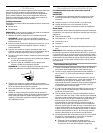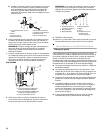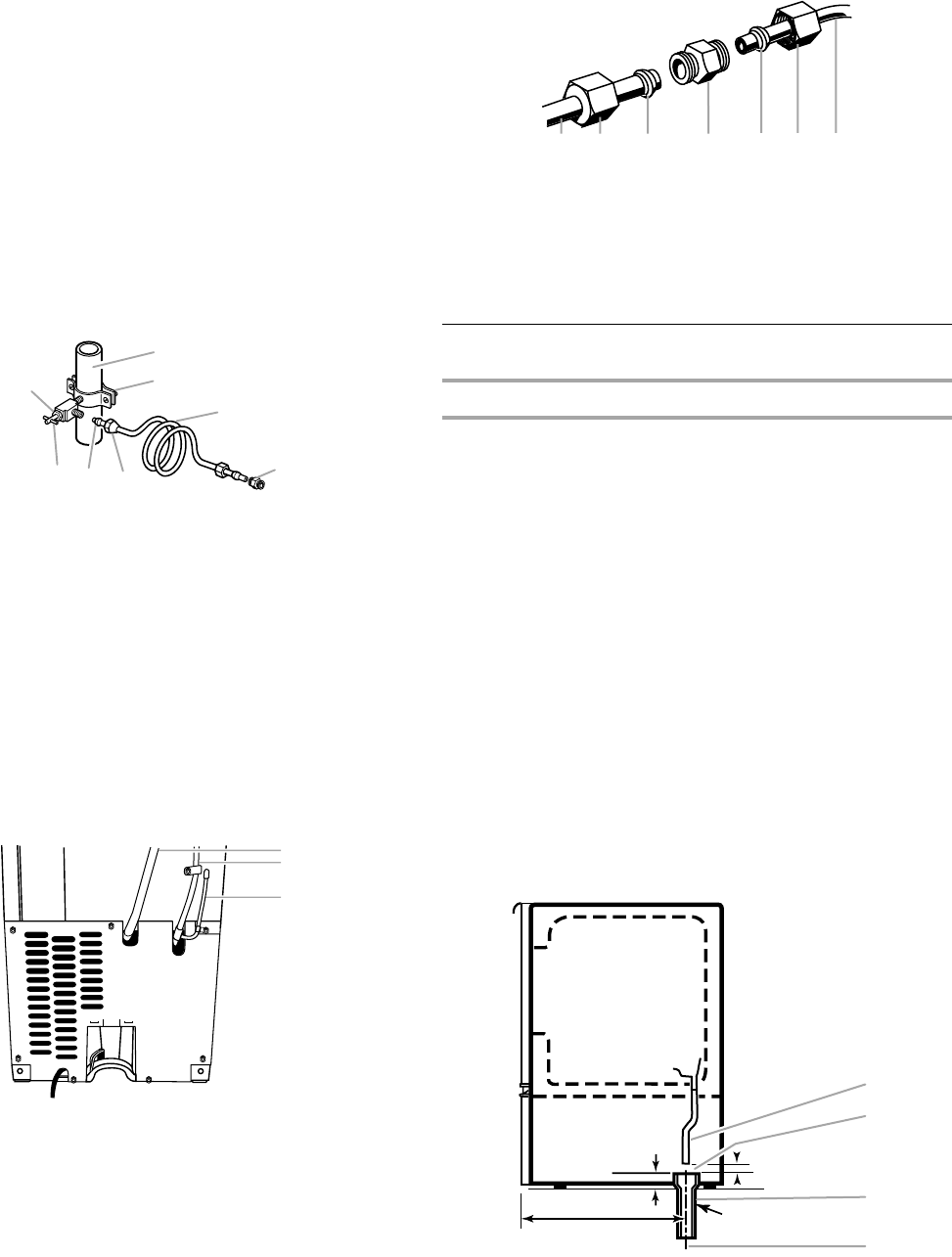
5
4. Fasten shutoff valve to cold water pipe with pipe clamp. Be
sure outlet end is solidly in the ¹⁄₄" (6.35 mm) drilled hole in the
water pipe and that the washer is under the pipe clamp.
Tighten packing nut. Tighten the pipe clamp screws carefully
and evenly so washer makes a watertight seal. Do not
overtighten the pipe clamp or you may crush cold water pipe
if it is soft copper tubing. Do not use a piercing-type or ³⁄₁₆"
(4.76 mm) saddle-type valve which reduces water flow and
clogs more easily.
5. Now you are ready to connect the copper tubing. Use ¹⁄₄"
(6.35 mm) OD soft copper tubing for the cold water supply.
■ Ensure that you have the proper length needed for the
job. Be sure both ends of the copper tubing are cut
square.
■ Slip compression sleeve and compression nut on copper
tubing as shown. Insert end of tubing into outlet end
squarely as far as it will go. Screw compression nut onto
outlet end with adjustable wrench. Do not overtighten.
6. Place the free end of the tubing into a container or sink, and
turn on main water supply and flush out tubing until water is
clear. Turn off shutoff valve on the water pipe.
NOTE: Always drain the water line before making the final
connection to the inlet of the water valve to avoid possible
water valve malfunction.
7. Bend the copper tubing to meet the water line inlet which is
located on the back of the ice maker cabinet as shown.
Leave a coil of copper tubing to allow the ice maker to be
pulled out of the cabinet or away from the wall for service.
REAR VIEW
8. Thread the nut onto the coupling on the end of the copper
tubing. Tighten the nut by hand. Then tighten it with a wrench
two more turns. Do not overtighten.
NOTE: To avoid rattling, be sure the copper tubing does not
touch the cabinet’s side wall or other parts inside the cabinet.
9. Turn shutoff valve ON.
10. Check for leaks. Tighten any connections (including
connections at the valve) or nuts that leak.
Drain Connection
Gravity Drain System
Connect the ice maker drain to your drain in accordance with all
state and local codes and ordinances. If the ice maker is
provided with a gravity drain system, follow these guidelines
when installing drain lines. This will help keep water from flowing
back into the ice maker storage bin and potentially flowing onto
the floor causing water damage.
■ Drain lines must have a minimum of ⁵⁄₈" (15.88 mm) inside
diameter.
■ Drain lines must have a 1" drop per 48" (2.54 cm drop per
122 cm) of run or ¹⁄₄" drop per 12" (6.35 mm per 30.48 cm) of
run and must not have low points where water can settle.
■ The floor drains must be large enough to accommodate
drainage from all drains.
■ The ideal installation has a standpipe with a 1¹⁄₂" (3.81 cm) to
2" (5.08 cm) PVC drain reducer installed directly below the
outlet of the drain tube as shown. You must maintain a
1" (2.54 cm) air gap between the drain hose and the
standpipe.
■ It may be desirable to insulate the drain line thoroughly up to
the drain inlet.
SIDE VIEW
A. Cold water pipe
B.Pipe clamp
C.Copper tubing
D.Coupling (purchased)
E. Compression nut
F. Compression sleeve
G. Shutoff valve
H. Packing nut
A. Drain hose (drain pump models only)
B. Vent hose (drain pump models only)
C. Water supply line
A
B
C
D
E
F
G
H
A
C
B
A. Line to ice maker
B.Nut (purchased)
C. Ferrule (purchased)
D. Coupling (purchased)
E.Ferrule
F. Nut
G. Supplied line from ice maker
A. Drain hose
B. 1" (2.54 cm) air gap
C. PVC drain reducer
D.Center of drain should be 20" (50.80 cm) from front of door, with or
without the ³⁄₄" (1.91 cm) panel on the door. The drain should also be
centered from left to right (8
¹³⁄₁₆
" from either side of the ice maker).
D
E F G
A B C
1" (2.5 cm)
20" (50.80 cm)
1⁷⁄₈"
(1.9 cm)
B
D
C
A
2" - 1¹⁄₂"
(5 cm - 3.8 cm)



